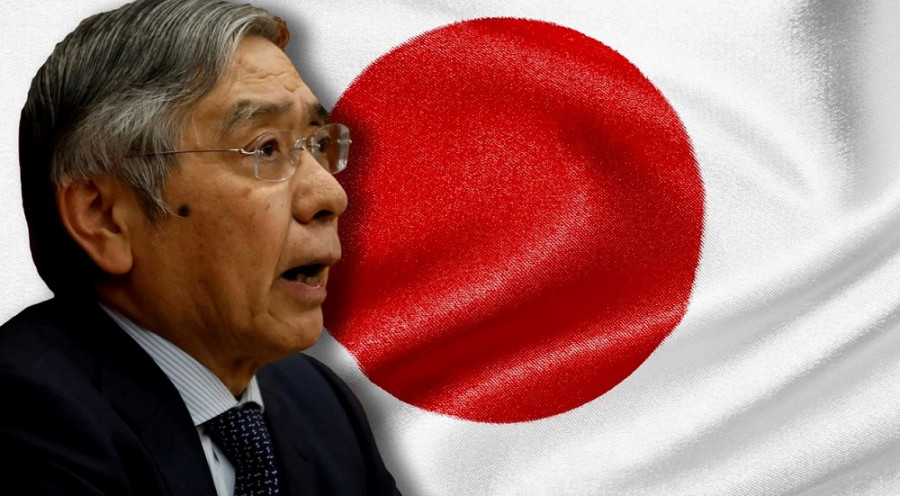
These are difficult times for forex traders: decisions have to be made while there are no sources of information. Christmas was celebrated on Sunday, so almost all key trading floors were closed. Monday's economic calendar was also nearly empty, with only Bank of Japan Governor Haruhiko Kuroda, who suddenly went back to being dovish, breaking the silence.
Spotlight is on China, as we receive highly contradictory COVID news from the PRC: according to several global news agencies, China is experiencing an unprecedented outbreak of coronavirus after its "zero-Covid" policy was loosened in late fall. Meanwhile, the Chinese press remains optimistic. Moreover, according to some Chinese news agencies, Beijing is going to open its borders and almost completely lift quarantine restrictions as early as early January next year.
Such fundamental factors shaped today's agenda: above all for the dollar-yen pair, which collapsed by almost 700 points last week.

After the December meeting, the Japanese central bank made an unexpected hawkish decision, expanding the range in which the yield of 10-year Japanese government bonds (JGB) can fluctuate (now it is around plus or minus 0.5%, against the previously accepted range of around plus or minus 0.25%). Traders and investors interpreted this decision quite unambiguously and even in a certain sense categorically - as the first step towards tightening monetary policy parameters. And according to some experts, the BOJ's next steps will be more radical - for example, the central bank may decide to stop controlling the yield curve or even abandon the policy of negative interest rates.
Considering the fact that for many years, Japan's central bank has been pursuing (and still implements) an ultra-loose monetary policy, such a tectonic shift shocked traders: within hours the pair went from 137.50 to the target of 130.60.
Kuroda tried to rectify the situation, saying that the market had misjudged what was going on. According to him, the central bank is not going to abandon its ultra-loose monetary policy in the near future. At the same time, he added that the latest tweaks were intended to enhance the effect of its ultra-easy policy, rather than a first step towards withdrawing its massive stimulus program.
During his speech, Kuroda reiterated several times that this is definitely not a step toward an exit. According to him, the central bank will aim to achieve the price target in a sustainable and stable manner, accompanied by wage increases, by continuing with monetary easing under yield curve control.
Also, Kuroda commented on the data published last week on the growth of inflation in the country. Recall that the indicators came out either in the green zone or at the forecasted level. Specifically, the overall Consumer Price Index (CPI) rose 3.8% in November (the strongest rate of growth for the indicator since 1981). The core CPI also broke a 40-year record. The CPI excluding food and energy prices jumped 2.8% y/y in October. Overall, inflation in Japan has exceeded the central bank's 2% target for the eighth straight month.
Despite such unipolar data, Kuroda stayed true to himself, voicing rather mild comments. In particular, he predicted that Japan's consumer inflation is likely to slow below 2% on average "in next fiscal year" (which, remember, will begin in March 2023), "as the effects of soaring import costs dissipate".
Reacting to these comments, Asia-Pacific stock indices showed positive dynamics on Monday (US, European, Hong Kong and Australian exchanges were closed because of Christmas). The pair also rose slightly, testing the 133rd figure.
As we can see, Kuroda's strong statements were taken as "right", but his words didn't provoke an increase in volatility. And not just because of the Christmas season. In my opinion, the market is skeptical of Kuroda's statements for two reasons. Firstly, it is important that the Japanese central bank has made an unprecedented decision. And it was made unexpectedly, and even in some measure suddenly. Secondly, the current governor of the BOJ will leave his post in just four months; his second term expires in April. Whereas his likely successor, Professor Takatoshi Ito of the National Graduate Institute for Policy Studies in Tokyo, is voicing far from dovish messages. In particular, commenting on the BOJ's high-profile decision, he said that a change in the central bank's policy on yield curve control may be the first step toward an exit from the ultra-loose monetary policy regime.
This hawkish message from Kuroda's eventual successor put significant pressure on the pair. While traders actually ignored Kuroda's words, despite the fact that he tried to offset the volatile effects of the BOJ's December meeting.
Thus, in my opinion, corrective pullbacks in the pair are still worth using to open short positions. The nearest bearish target is 131.60 (the bottom line of the Bollinger Bands indicator on the daily chart).